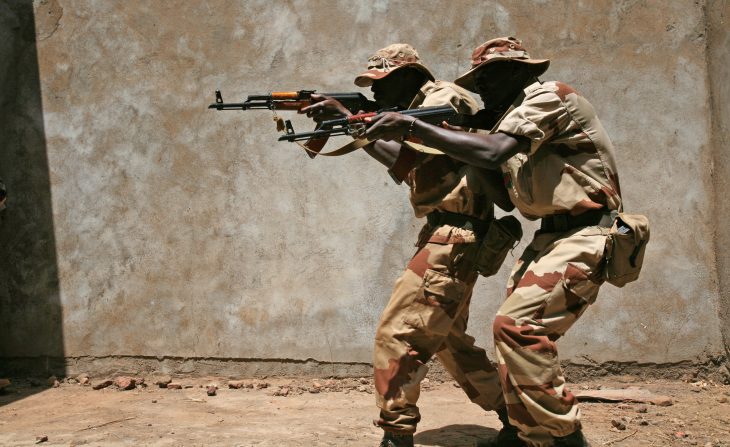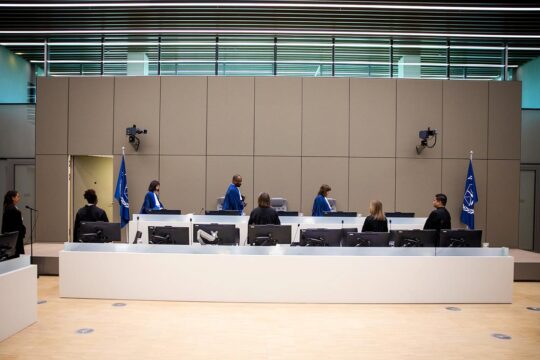BAMAKO, 19 August 2015 (IRIN) - More than eight weeks after a landmark peace accord between Mali’s Bamako government and a Tuareg-led rebel coalition brought hope of an end to years of unrest, little has been done to end the fighting and militancy is once again on the rise.
In recent months, Mali has experienced some of the worst violence since international forces pushed Islamist militants out of their northern strongholds in January 2013. The upsurge included a high-profile attack by al-Qaeda-linked Islamists on a popular hotel frequented by UN officials that left 13 people dead.
“Unfortunately, so far, there has been more celebration of the accord itself, than actual progress towards its implementation,” said Susanna Wing, an associate professor of political science at Haverford College in California. “There will need to be ongoing and steady steps towards implementation.”
But, as Wing explained, the International Monitoring Committee of the Peace and Reconciliation agreement – to be chaired by Algeria and tasked with ensuring the accord is implemented – has yet to even nominate its members.
See: Is Mali’s peace process in peril?
Until the committee starts work, the accord is just signatures on paper. And even if the committee does become functional, peace is far from guaranteed, especially given the varied motivations within the Coordination of Azawad Movements (CMA), the diverse coalition of Tuareg rebel factions and Arab and Fulani separatist groups with whom the deal was brokered.
“The peace deal's implementation can help tamp down some potential militancy and put aside a risk of continued clashes between CMA forces and pro-government militias as well as with the Malian government,” Andrew Lebovich, a researcher and visiting fellow with the European council on foreign relations, told IRIN. “But even a successful implementation of the accord will prompt groups to further fragment, which could further inflame tensions and lead to continued violence from all armed groups operating in the North.”
In May, the International Crisis Group warned in a report that: “Mali is heading less toward lasting peace than toward a new phase of confrontations.”
Violence on the rise
In northern Mali, different militant factions have picked up not just the pace of attacks, but also the severity. Clusters that were previously scattered or pushed back by international forces have also regrouped. Since the beginning of the year, the attacks have spread to the centre of the country, and in June, to the south near the borders with Ivory Coast and Burkina Faso.
While the presence of international forces has made it more difficult for armed groups to operate, attacks on both military and civilian targets have increased.
Earlier this month, on 7 August, gunmen launched an audacious attack on a hotel in Sévaré, a garrison town 600 kilometres north of Bamako. The hostage crisis ended 24 hours later when Malian troops, reportedly backed by French special forces, stormed the building. Four soldiers, five militants and five UN workers – two Ukrainians, a Nepalese, a South African and a Malian – died. Islamist fighters with ties to al-Qaeda-linked group al-Mourabitoun claimed responsibility for the attack.
At least 20 CMA “separatists” were reportedly killed earlier this week by a pro-government militia during three days of fighting in the north’s Kidal region.
Following the attacks, the UN peacekeeping mission in Mali, MINUSMA, set up a 20-kilometre “safety zone” around the town of Kidal on 18 August to try to restore peace.
A lost cause?
The optimism many Malians felt after international forces first liberated northern towns in 2013, and again following the signing of the peace accord in June, has now faded.
See: Hopes for reconciliation – the view from Timbuktu
It has been replaced by considerable doubt over the warring parties’ commitment to peace. The UN-brokered accord only briefly mentions subjects like access to education, jobs or justice, issues that are important to many northerners and fundamental to lasting progress.
“Prioritising security overshadows the need to restore the state’s social function across the Malian territory,” Bruce Whitehouse, associate professor of anthropology at Lehigh University, said.
Throughout northern Mali, basic social services and government institutions have yet to be restored and are unlikely to resume as long as the fighting continues.
An estimated three million people don't have enough to eat, according to the United Nations and Mali officials.
And differences remain, even over the agreement itself. Many separatists are unhappy that although it calls for the creation of elected regional assemblies, it stops short of autonomy or federalism, a long-time rebel demand.
“The MNLA, the Azawad Liberation Movement, itself is divided over the new accord,” Wing said. “While the Malian government was clear that territorial integrity was non-negotiable, the autonomy of the north remains a goal for some….There will be no peace unless all parties agree to peace.”





